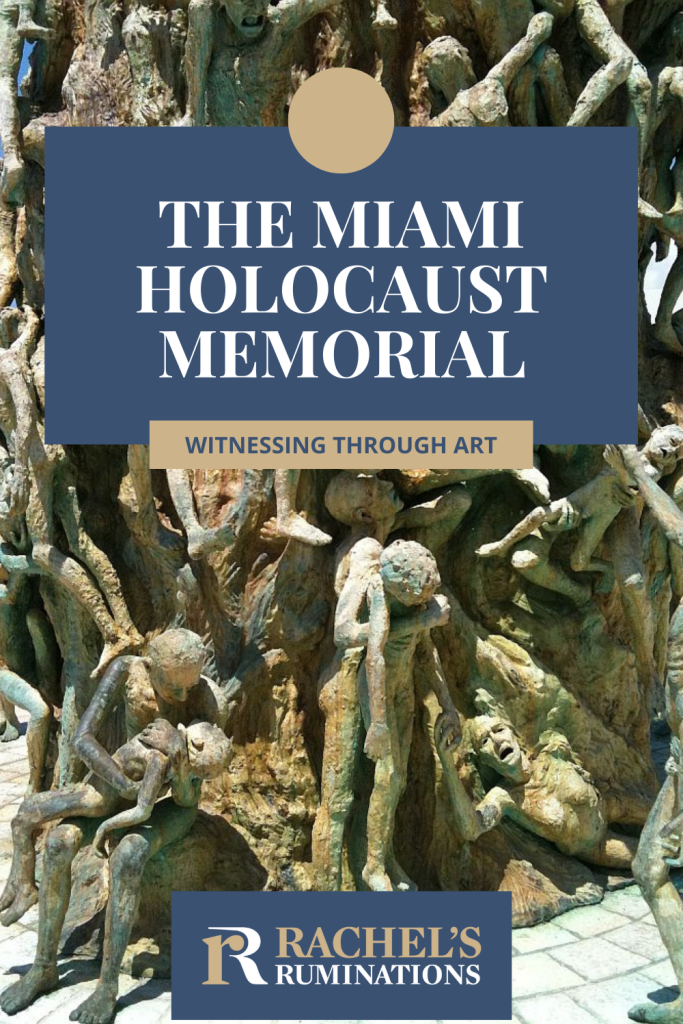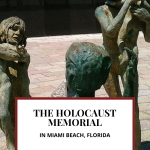Holocaust Memorial, Miami: Witness the horror through art
Note: The following is a guest post by Donna Emperador.
There are tons of things to do in south Florida for families. So you can imagine my surprise when my teenage daughter chose to visit the Holocaust Memorial in Miami Beach instead of going to a waterpark.
School was out. Summer vacation had just begun. I packed all three kids in the car, and we headed down to Miami Beach for the day: over an hour’s drive from western Fort Lauderdale. As we entered Miami Beach I noticed the needle on my temperature gauge was in the red so I tried to find a place to park quickly before my car overheated. We took a quick detour into a nearby school parking lot. Thankfully the school was open for summer classes and they reassured us that our car would not be towed.

We were determined not to let our car debacle get in the way of visiting the memorial. Luckily we were only a few blocks away so we decided to go on foot. I put my two-year-old in the stroller and grabbed the diaper bag. If you have ever been in Miami in the summer, you know it is hot. With sweat beads building on us, we walked the few blocks to the memorial, passing a man sleeping on a bench. I began to question our choices.
Disclosure: This article contains a map showing affiliate links. If you click on it and book a room, I (Rachel) will receive a small commission. This will not affect your price.
The Holocaust Memorial
But when we reached the memorial, our complaints stopped. Looking up, we witnessed a giant arm reaching out of the cement towards the sky, as if pleading with God for help. The massive arm is covered with lifelike humans scrambling to climb to freedom. Desperate to escape the horrors awaiting them, they clutch each other as they climb, a foot on a neck, a hand on a face. The looks of terror emanating from them are gut wrenching.
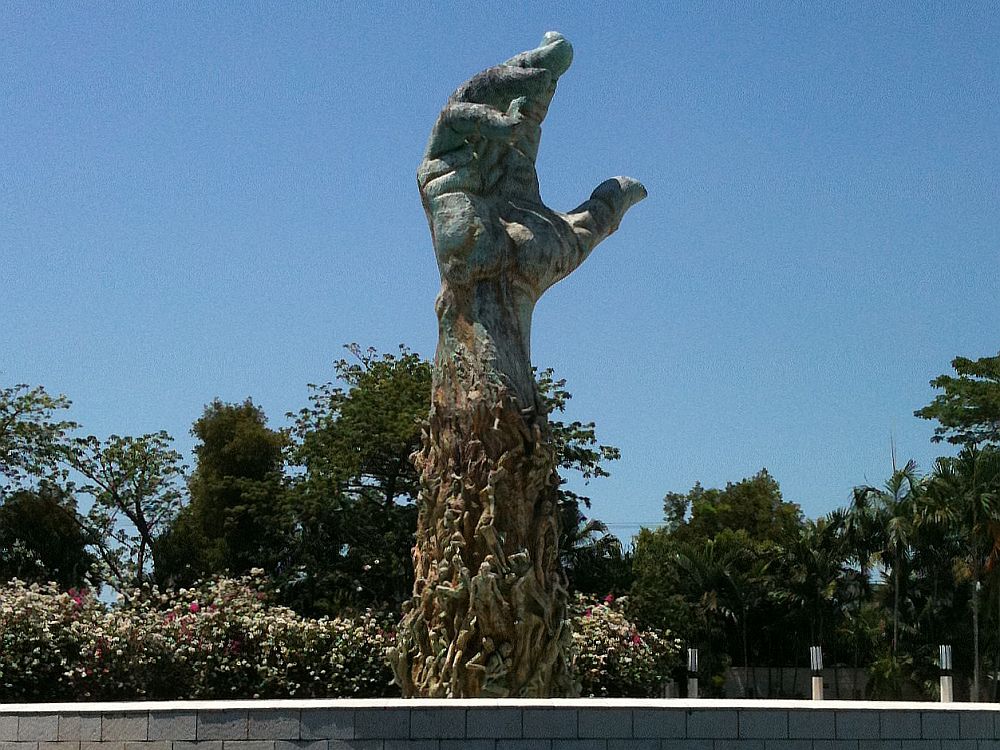
As we walked around, we spied more sculptures of emaciated people lying on the ground. It was hard to discern if they’re supposed to be dead or alive. Others are upright, unclothed, carrying malnourished infants and children. One statue looks like a young girl, lying on the ground. Too weak to get up, she stretches out a hand as if begging for help.
There is also a wall which lists names of those who died: thousands of names, with more being added all the time. The immense wall, so burdened with names, provides shade from the heat of the day.
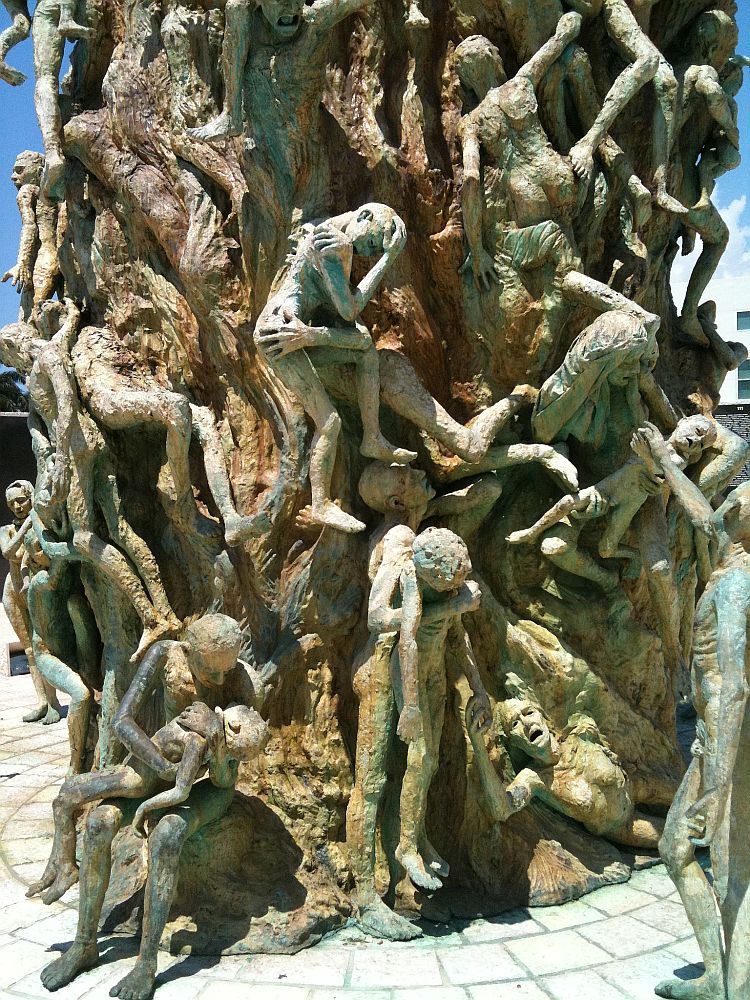
Interesting Facts about the Holocaust Memorial, Miami Beach
How the Miami Holocaust Memorial came to be
In 1984 a group of Holocaust survivors came up with the idea to honor the 6 million Jews who were killed during the Holocaust with a memorial. They formed a non-profit group, the Holocaust Memorial Committee, in 1985.
The committee chose Miami’s South Beach for the site of the memorial due to the large number of survivors living in this area. At the time, there were over 20,000 survivors in the Miami area.
Some people took issue with this location, believing that the subject matter put a damper on the “fun in the sun” vibe of the area. Others objected to the site because it was going to be on government land, citing the division between church and state. However, the memorial is about history and doesn’t include religious symbols.
The proposal to build the memorial was approved after many Holocaust survivors argued in its favor. It took 4 years to build. On February 4, 1990, the dedication ceremony took place and the monument opened to the public.
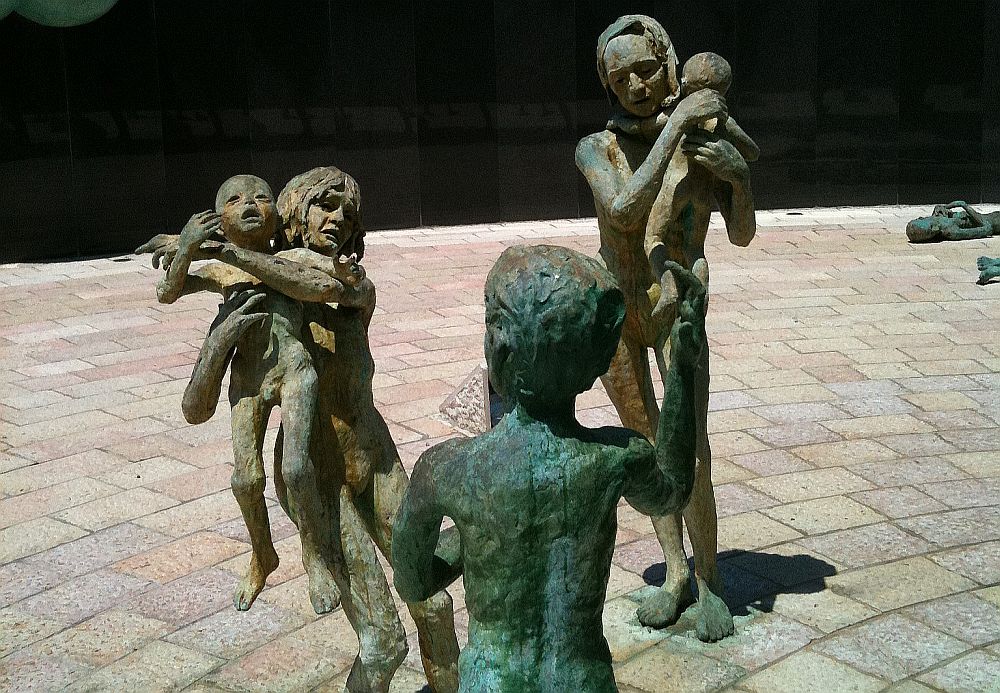
The design of the memorial
Of the various parts of the memorial, the outstretched arm in particular was originally considered an abomination, too grotesque to display. Yet that was exactly the point: to highlight how grotesque the Holocaust was. To use the words of the designer, Kenneth Treisler, the sculptures are part of “a series of outdoor spaces in which the visitor is led through a procession of visual, historical and emotional experiences with the hope that the totality of the visit will express, in some small way, the reality of the Holocaust.”
Here are some other Holocaust memorials to read about:
Important things to know when visiting the Miami Holocaust Memorial
The rules in place at the memorial all have to do with showing respect for the victims:
- Even though this memorial is outdoors, food, beverages, and smoking are not permitted.
- No pets are allowed, other than service animals.
- Shoes and shirts are required as if it were an indoor venue, out of respect for the deceased.
- Bikes, scooters, and Segways are prohibited on the site.
- Due to the sacred nature of the place, please leave your cell phone conversations for another time and refrain from using profanity.
- If you’re planning on visiting with a group of 10 or more people, you will need to make a reservation.
Is this an attraction that is ok for kids to visit?
There is no set-in-stone answer to this one. I visited with my children who were ages 12, 8, and 2 at the time. The site is not large, so the visit fits in with smaller attention spans.
The artwork is very detailed and may be scary for some children. Prior to visiting I had discussions with my children about the horrific realities that took place during the Nazi regime. These statues are meant to disturb you and provoke your social consciousness. To me, I thought it was important for my children to witness this. When we don’t look at the horrors of the past straight on, it is easy to become complacent and allow similar things to happen again.
Looking back
After the visit, while waiting for a tow truck, we had time to reflect on what we saw. While the day had its ups and downs, ending with a bumpy ride in the back of a work van, we were glad we had the chance to experience this sight. It left a lasting impression on our minds that overshadowed the harrowing car experience.
Other articles about Miami:
Practical information
Where is the Miami Holocaust Memorial?
The memorial is located at 1933-1945 Meridian Avenue in Miami Beach. Yes, you are correct: the address directly correlates to the years of the Nazi regime.
Getting there by bus
If you’re in Miami, you can reach the memorial by taking Miami-Dade bus route 123-South Beach Local.
Getting there by car
If you’re coming from the north, take I-95 south to 1-195-East, also known as Julia Tuttle Causeway. Then exit to the right onto Alton Road. After that, you will need to make a left onto Dade Blvd. Turn left onto Meridian where the memorial will be on the right.
From the south, drive north on 1-95 to 1-195-East, also known as MacArthur Causeway. Make a left onto Alton Road. Then turn right onto 17th Street. From there make a left onto Meridian. You will see the memorial on the right.
There is metered parking on the street which still uses coins, or you can park in the Municipal lot between 17th and 18th streets on Meridian Avenue.
When is the Holocaust Memorial open?
Since it is an outdoor destination, it is open 365 days a year from 10am until dusk. However, Florida is very hot and humid in the summer. Also, our rainy season starts in June and lasts through November. Keep that in mind when planning your visit. Always slather on the sunscreen and bring an umbrella when there is a chance of rain. I recommend visiting during the winter or spring if you are not used to the heat.
How much time will it take?
Since this is an outdoor memorial and not a full-fledged museum, you will only need about an hour to see the sculptures and take in the awesomeness of the site.
How much does it cost?
While visiting the site itself is free, for a $2 donation you can get a brochure for a self-guided tour.
Is the Holocaust Memorial accessible?
The memorial is fully accessible to everyone. If you need a wheelchair or a sign language interpreter there is a number on the memorial’s website to request these.
Where to stay?
Use the map below to compare prices for accommodations in Miami Beach:
A tip: You might also be interested in visiting the Jewish Museum in Florida, also in Miami Beach. Housed in a former synagogue, it focuses on the history and culture of Jews in Florida.
